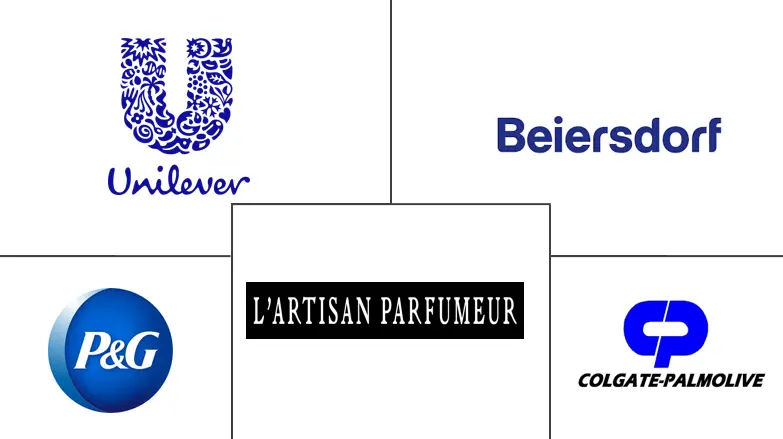Market Size of South America Bath & Shower Products Industry

| Study Period | 2019 - 2029 |
| Base Year For Estimation | 2023 |
| Forecast Data Period | 2024 - 2029 |
| Historical Data Period | 2019 - 2022 |
| CAGR | 3.20 % |
| Market Concentration | Medium |
Major Players
*Disclaimer: Major Players sorted in no particular order |
South America Bath & Shower Products Market Analysis
The South America bath and shower products market is projected to grow at a CAGR of 3.2% during the forecast period, 2020 - 2025.
- The market is primarily driven by increasing awareness about health and hygiene among the people in the country. In addition, the hot and humid climate that results in sweating has created a need for bath and shower products. Moreover, the rising disposable income and increasing living standards of the consumers are also leading consumers to opt for more expensive and aesthetically appealing bath and shower products with different fragrances and effective ingredients. Furthermore, frequent launches of enhanced products such as seed oil or vitamins infused shower gels, have further contributed to the growth of the market.
- However, the growing awareness towards the use of chemical ingredients in such bath and shower gels, like sodium lauryl sulfate, dioxane, parabens, etc., that is considered as a harmful substance for the skin, is expected to hinder the growth of bath and shower products market.
South America Bath & Shower Products Industry Segmentation
The South America bath and shower products market is segmented by type, user and distribution channels. By type, the market is segmented into shower cream/gel, bar soap, shower oil, and others and by and distribution channel into supermarket/hypermarket, convenience stores, online stores, & others. Also, the study provides an analysis of the bath and shower products market in the emerging and established markets across the South America region, including Brazil, Argentina, and the Rest of South America.
| By Type | |
| Shower Gel/Body wash | |
| Bar Soap | |
| Shower Oil | |
| Others |
| By Distribution Channel | |
| Supermarkets/Hypermarkets | |
| Convenience Stores | |
| Online Retail Stores | |
| Others |
| By Geography | |
| Brazil | |
| Argentina | |
| Rest of South America |
South America Bath & Shower Products Market Size Summary
The South America bath and shower products market is experiencing growth driven by heightened awareness of health and hygiene, alongside the region's hot and humid climate, which increases the demand for such products. Consumers are increasingly opting for premium and aesthetically appealing products, influenced by rising disposable incomes and living standards. The market is further bolstered by the frequent introduction of innovative products, such as those infused with seed oils and vitamins. However, the market faces challenges due to growing concerns over the use of chemical ingredients in these products, which are perceived as harmful to the skin. The preference for shower gels and body washes is on the rise, attributed to their ease of use and superior moisturizing properties compared to traditional bar soaps. The availability of these products in supermarkets and hypermarkets also supports their growing popularity.
Brazil stands out as the leading market for bath and shower products in South America, followed by Argentina and Chile. The surge in e-commerce, driven by the increasing number of internet and smartphone users, particularly among tech-savvy millennials, has significantly boosted online sales of bath products in Brazil. The convenience, variety, and competitive pricing offered by online retail channels are key factors in this growth. The market is characterized by intense competition and fragmentation, with numerous regional and domestic players. Companies are focusing on mergers, acquisitions, partnerships, and new product development to enhance their market presence. Prominent players in the market include Unilever, Beiersdorf Group, L'Artisan Parfumeur S.A.R.L, Colgate-Palmolive Company, and Procter & Gamble, who are actively innovating to meet consumer demands.
South America Bath & Shower Products Market Size - Table of Contents
-
1. MARKET DYNAMICS
-
1.1 Market Drivers
-
1.2 Market Restraints
-
1.3 Porter's Five Forces Analysis
-
1.3.1 Threat of New Entrants
-
1.3.2 Bargaining Power of Buyers/Consumers
-
1.3.3 Bargaining Power of Suppliers
-
1.3.4 Threat of Substitute Products
-
1.3.5 Intensity of Competitive Rivalry
-
-
-
2. MARKET SEGMENTATION
-
2.1 By Type
-
2.1.1 Shower Gel/Body wash
-
2.1.2 Bar Soap
-
2.1.3 Shower Oil
-
2.1.4 Others
-
-
2.2 By Distribution Channel
-
2.2.1 Supermarkets/Hypermarkets
-
2.2.2 Convenience Stores
-
2.2.3 Online Retail Stores
-
2.2.4 Others
-
-
2.3 By Geography
-
2.3.1 Brazil
-
2.3.2 Argentina
-
2.3.3 Rest of South America
-
-
South America Bath & Shower Products Market Size FAQs
What is the current South America Bath & Shower Products Market size?
The South America Bath & Shower Products Market is projected to register a CAGR of 3.20% during the forecast period (2024-2029)
Who are the key players in South America Bath & Shower Products Market?
Unilever, L’Artisan Parfumeur S.A.R.L, Colgate-Palmolive Company, Beiersdorf AG and Procter & Gamble Co. are the major companies operating in the South America Bath & Shower Products Market.

